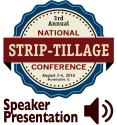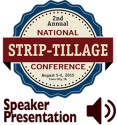Advertise Follow Us
Water Management
Strategies for preserving or managing moisture in strip-till systems, including tiles, cover crops, irrigation and other approaches.
ARTICLES
Press Release
18th Annual Conservation in Action Tour Features Unique Planting-Season Farm Tours on the Great Plains
Early bird registration now open for Sioux Falls, S.D., event on May 6-7
Read More
Sponsored Content: Building Healthier Soil and Profits with Strip-Till
Is Strip-Till Right for Your Farm?
Read MoreApplications for EQIP Classic, EQIP IRA, and AMA programs due November 22
NRCS in Nevada is offering financial and technical assistance to help agricultural producers apply conservation practices through EQIP Classic, EQIP IRA, and AMA. More than $16 million is available to producers.
Read More
















